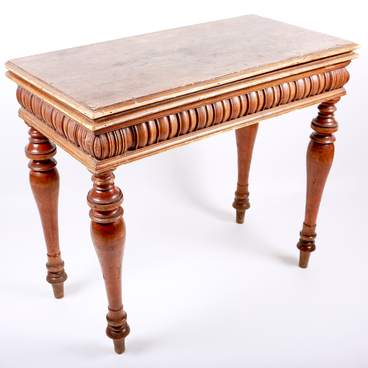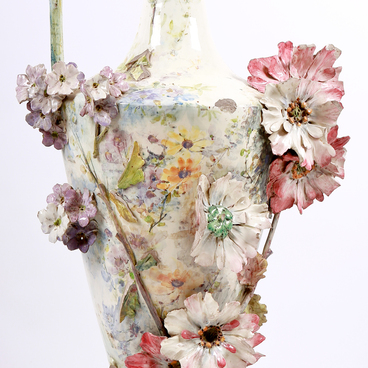The exhibition of the Kasimov Museum-Reserve contains a wooden polychrome sculpture of the 17th century. It was called ‘Crucifixion with Bystanders’ or ‘Calvary’.
The complex composition of the sculpture consists of five figures. In the center, there is Jesus Christ, crucified on the cross. His mother Mary and Saint Magdalene are on the left, and the Apostle John the Theologian and the Holy Martyr Longinus are on the right. The height of the sculptures reaches 180 centimeters.
The faces of the biblical characters have oriental features: a wide, rounded face, flat cheekbones, and heavy upper eyelids. The left hands of all the figures are put to the ear, and the right hands are put to the heart. It was a special gesture that meant the triad ‘silence-attention-greeting’.
The sculpture ‘Calvary’ arrived at Kasimov from Moscow: missionaries brought it to the town to convert the Kasimov Tatars to Orthodoxy and tell them more about the Christian faith.
Every Thursday, when people gathered in the town market, the ‘Calvary’ was displayed on the Cathedral Square. Next to it, missionaries delivered sermons and introduced the Kasimov Tatars to Christianity.
The preachers emphasized the physical resemblance of the Tatars with the figures from the sculpture and told that all people were brothers and God was the same for all peoples, though they called him differently. However, the Orthodox faith was the most correct of all religions — so the missionaries said.
The arguments seemed unconvincing to most of the Kasimov Muslims, and they refused to be baptized. But some of the high-ranking Tatars converted to Orthodoxy — they received some benefits for that.
According to the memories of residents, the sculptural group was permanently housed on the territory of the Kazan Convent — in the Church of the Nativity of Christ near the side-chapel of Great Martyr Paraskeva Pyatnitsa.
After the Russian revolution, ‘Calvary’ was transferred to the Kasimov Museum-Reserve. Although the age of the sculpture is more than 300 years, it has retained its original appearance; the wood has not cracked and has not dried up. This indicates the high skill of the author who executed ‘Calvary’.
The complex composition of the sculpture consists of five figures. In the center, there is Jesus Christ, crucified on the cross. His mother Mary and Saint Magdalene are on the left, and the Apostle John the Theologian and the Holy Martyr Longinus are on the right. The height of the sculptures reaches 180 centimeters.
The faces of the biblical characters have oriental features: a wide, rounded face, flat cheekbones, and heavy upper eyelids. The left hands of all the figures are put to the ear, and the right hands are put to the heart. It was a special gesture that meant the triad ‘silence-attention-greeting’.
The sculpture ‘Calvary’ arrived at Kasimov from Moscow: missionaries brought it to the town to convert the Kasimov Tatars to Orthodoxy and tell them more about the Christian faith.
Every Thursday, when people gathered in the town market, the ‘Calvary’ was displayed on the Cathedral Square. Next to it, missionaries delivered sermons and introduced the Kasimov Tatars to Christianity.
The preachers emphasized the physical resemblance of the Tatars with the figures from the sculpture and told that all people were brothers and God was the same for all peoples, though they called him differently. However, the Orthodox faith was the most correct of all religions — so the missionaries said.
The arguments seemed unconvincing to most of the Kasimov Muslims, and they refused to be baptized. But some of the high-ranking Tatars converted to Orthodoxy — they received some benefits for that.
According to the memories of residents, the sculptural group was permanently housed on the territory of the Kazan Convent — in the Church of the Nativity of Christ near the side-chapel of Great Martyr Paraskeva Pyatnitsa.
After the Russian revolution, ‘Calvary’ was transferred to the Kasimov Museum-Reserve. Although the age of the sculpture is more than 300 years, it has retained its original appearance; the wood has not cracked and has not dried up. This indicates the high skill of the author who executed ‘Calvary’.

